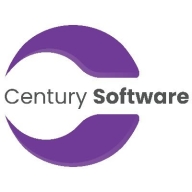

OpenText Process Automation and Century Software Business Process Management are in the business process enhancement category. Century Software appears to have the upper hand due to its advanced features.
Features: OpenText offers document management, workflow customization, and efficient cloud deployment. Century Software presents comprehensive process modeling, integration capabilities, and support for complex business needs.
Ease of Deployment and Customer Service: Century Software provides flexible deployment options and strong customer service, whereas OpenText excels in efficient cloud deployment with personalized support.
Pricing and ROI: OpenText is noted for competitive pricing and quick ROI due to lower setup costs. Century Software requires a higher initial investment but offers substantial ROI through its extensive feature set.

Century Software Business Process Management streamlines operations through robust process automation and management tools. Ideal for businesses aiming to enhance workflow efficiency while reducing operational overhead, it adapts to diverse sectors, offering comprehensive functionalities.
Century Software Business Process Management targets companies seeking to improve operational efficiency through tailored business workflows. With capabilities ranging from automated task management to real-time analytics, it supports dynamic operational demands. Users appreciate its ease of integration, scalability, and intuitive interfaces, which allows teams to expedite processes and focus on strategic growth. Despite its robustness, some users mention potential improvements, such as customizable reporting features.
What are the key features of Century Software Business Process Management?Century Software Business Process Management is implemented across industries such as manufacturing, healthcare, and finance. Each sector leverages its features to address unique challenges, from optimizing supply chains to improving patient care processes and managing financial transactions efficiently. Its flexibility and comprehensive toolset make it a valuable asset in enhancing industry-specific workflows.
OpenText Process Automation offers a low-code environment for efficient development, enhanced by strong integration, dynamic case management, and OCR technology to streamline business processes across industries.
OpenText Process Automation provides a comprehensive platform for improving business processes with features that allow for significant time reduction through a low-code development environment. It integrates seamlessly with third-party systems, enabling dynamic case management and effective monitoring capabilities. By incorporating OCR technology, it enhances efficiency and lowers costs. Users benefit from its centralized architecture, which brings together diverse tools to streamline operations. Its BPM modules support automation in supply chain and vendor processes, leading to widespread implementation. Known for its stability and scalability, it also receives positive feedback for its reliable support. However, there are areas needing enhancement, such as improved low-code features, better integration, and a desire for a unified UI with better mobile compatibility. There is a call for an archival function to address database growth and concerns about pricing and performance related to the BPMN 2.0 model. Potential improvements include AI integration and enhanced modeling in the low-code platform.
What are the key features?OpenText Process Automation is implemented in industries like insurance, banking, and manufacturing for tasks such as invoice processing, accounts payable, cash management, and supply chain automation. It enables integration with systems like SAP and Salesforce, offering on-premises or cloud deployment, enhancing workflows and document orchestration.
We monitor all Business Process Management (BPM) reviews to prevent fraudulent reviews and keep review quality high. We do not post reviews by company employees or direct competitors. We validate each review for authenticity via cross-reference with LinkedIn, and personal follow-up with the reviewer when necessary.